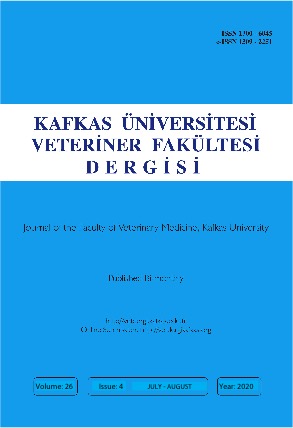
This journal is licensed under a Creative Commons Attribution-NonCommercial 4.0 International License
Kafkas Üniversitesi Veteriner Fakültesi Dergisi
2020 , Vol 26 , Issue 4
Classification of Raw Milk Composition and Somatic Cell Count in Water Buffaloes with Support Vector Machines
1Tokat Gaziosmanpasa University, Faculty of Agriculture, Department of Animal Science, TR-60250 Tokat - TURKEY
DOI :
10.9775/kvfd.2020.23955
The study investigates the classification of milk quality with support vector machines (SVM) using the raw milk composition and somatic cell
count (SCC) data on buffalos. For this purpose, 11-variable (dry matter, fat-free dry matter, fat (%), protein, lactose, casein, urea, density, acidity,
pH, freezing point) on milk composition and SCC of 288 buffalos were used. SVM is a classifier with a high generalization ability that is based on
structural risk minimization with a statistical learning system and can be applied to both linear and non-linear data. The classification successes
of some kernel functions used in the SVM (polynomial kernel, normalized polynomial kernel and radial basis kernel) were investigated and their
classification performances were compared with a multilayer perceptron algorithm. The results showed that the classification successes of
polynomial kernel, normalized polynomial kernel and radial basis kernel were 93.06%, 92.36% and 90.97%, respectively, while the classification
success of the multilayer perceptron was 81.60%. The comparison of the results with respect to the root mean square error (RMSE) values
revealed that the polynomial kernel had the lowest value (0.263), while the multilayer perceptron had the highest value (0.384). According to this
criterion, the best classifier was the polynomial kernel function, while the weakest classifier was the multilayer perceptron (0.384). Considering
the receiver operating characteristic (ROC) area values, with respect to the closeness to 1 criterion, normalized polynomial kernel was the best
function, while the multilayer perceptron function was the weakest function. The separate evaluation of the precision, sensitivity and F-measure
values showed that the polynomial kernel was the most successful function, while the multilayer perceptron was the weakest function.
Keywords :
Support vector machine, Somatic cell count, Kernel model optimization










